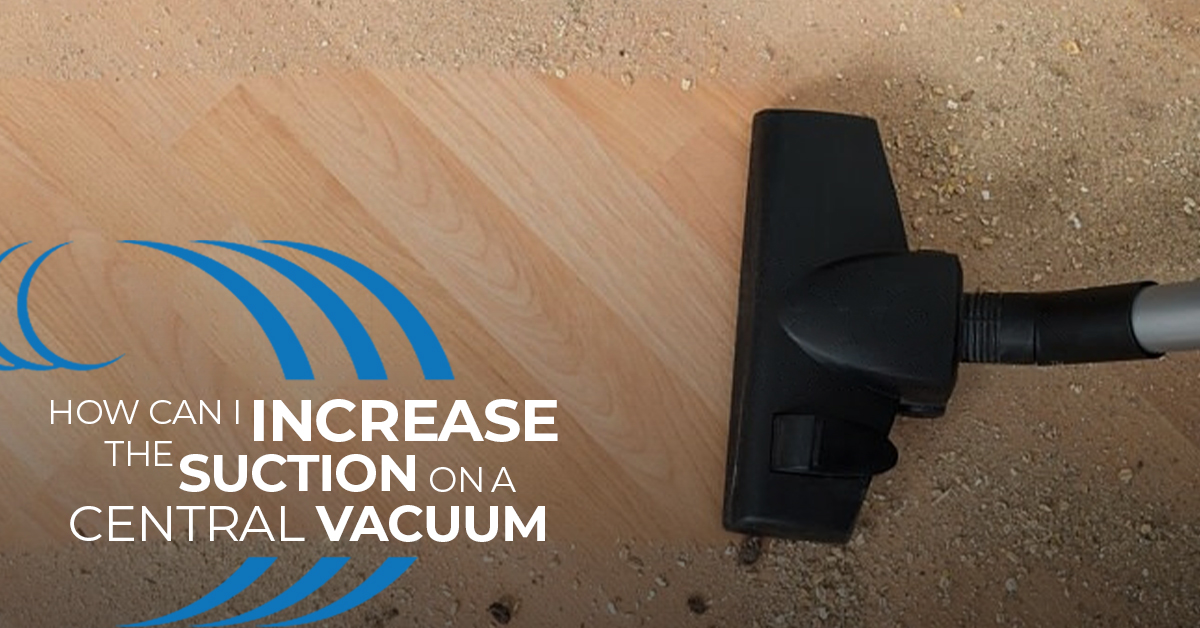
Boosting Productivity in Office Buildings with Central Vacuum
In today’s fast-paced work environment, maintaining a clean and organized office space is crucial for productivity. Office buildings often struggle with keeping their premises clean

Before you head right into vacuum cleaning, it’s always important to check if your vacuum lost suction partially or completely.
Usually, a central vacuum has decreased suction because one of its components is either clogged or damaged. These blockages or holes also restrict airflow, which contributes to the clogging and overheating of the suction motor.
There are six things that can cause a vacuum suction motor to become congested or dysfunctional. So, if your vacuum is only cleaning up a tiny amount of debris or none at all, your central vacuum system probably needs some of its components cleaned, unclogged or replaced.
Below are some steps you can take to maintain or boost your central vacuum’s suction power.
Canisters have windows or indicators that let you know how much dirt is captured inside the vacuum. However, it is highly recommended that you empty your canister before or after you operate your vacuum. This prevents dust and debris from accumulating in the power unit, which can impair or damage the motor.
Regular rinsing or washing of the canister is also advised because dirt and debris can cling on to it. Just be sure to wipe both the inside and exterior of the canister after washing it, then wait until it is completely dry before reattaching it to the vacuum.
If a bag is filled up past 75%, the motor can overheat and clog, which will reduce central vacuum suction and efficiency.
Do not continue using your vacuum once your bag is full. Otherwise, your vacuum’s suction will be reduced and air will be stopped from getting into the suction motor. The heat produced by this could melt the wires or even the belt.
A vacuum cleaner with a full bag will also just recirculate dust all around the house, as it has no room to store the new particles that it has sucked in.
A vacuum bag must be replaced as soon as it reaches 75% of its maximum capacity.
A vacuum cleaner will have a hard time sucking in air when its filter is dirty, which will cause the motor to become clogged and to malfunction.
Your vacuum cleaner’s suction and performance may be maintained by keeping your filters clean, enabling it to keep collecting debris and improving the air quality in your home.
Filters should be cleaned at least every three months and replaced every six months, depending on how frequently you use your vacuum.
If your filter is composed of plastic or foam, you can thoroughly clean it with running water until all the dirt is cleared. The filter should then be properly dried before being reinserted into the vacuum. A foam filter typically needs around 24 hours to thoroughly dry.
If your filter is paper or cloth, you can completely enclose it in a garbage bag and shake it until the dirt falls into the bag.
It’s also crucial to check your filter to make sure it hasn’t been pierced or damaged. Otherwise, this will also result in the power unit being jammed with dust and debris.
If you use your vacuum while its hose or piping is blocked, less air will be able to pass through it, reducing suction and increasing the risk of its motor overheating.
Central vacuum system maintenance is crucial, and parts of it are paying close attention to your central vacuum’s suction and checking your pipes and hose for any obstructions that can weaken it.
Follow these steps to clear blockages from the pipes:
Here are some guidelines you can follow if the hose gets clogged:
If your hose is ripped or punctured, you should replace it. A damaged hose could be a reason why a central vacuum has decreased suction, as this refrains air from flowing through the vacuum.
Here are some tips for taking care of a cleaning hose:
Your roller brush will be entangled with thread, lint, and hair after a few times of using it. This buildup will cause the belt to be stretched, which will prevent the roller brush from spinning properly.
On the other hand, the roller brush will continue to spin correctly and effectively capture debris with regular cleaning.
Simply follow to these instructions to clean the roller brush:
The belt holds the roller brush in place and aids in its rotation. The roller brush will spin more slowly or not at all if the belt is too loose and no longer secure against the brush. Replace the belt with a new one if this occurs.
The belt needs to be changed every six months or once a year, depending on how frequently you use your vacuum.

In today’s fast-paced work environment, maintaining a clean and organized office space is crucial for productivity. Office buildings often struggle with keeping their premises clean

Central vacuums in animal shelters & vet clinic: Explore how these systems boost hygiene, efficiency, and air quality.

In the world of home entertainment, a home theater is a luxury that many homeowners dream of. It’s an immersive experience that brings the magic

A central vacuum system is a significant investment that promises convenience, powerful suction, and improved indoor air quality. However, choosing the right central vacuum hose
Our home automation products are at the forefront of technology, offering a blend of convenience, security, and efficiency. As a Homewave dealer, you’ll be part of a network transforming homes into smart, futuristic spaces.
Embark on this rewarding journey with us and leverage the power of innovative technology.
Please fill out this form and become a Homewave Dealer.